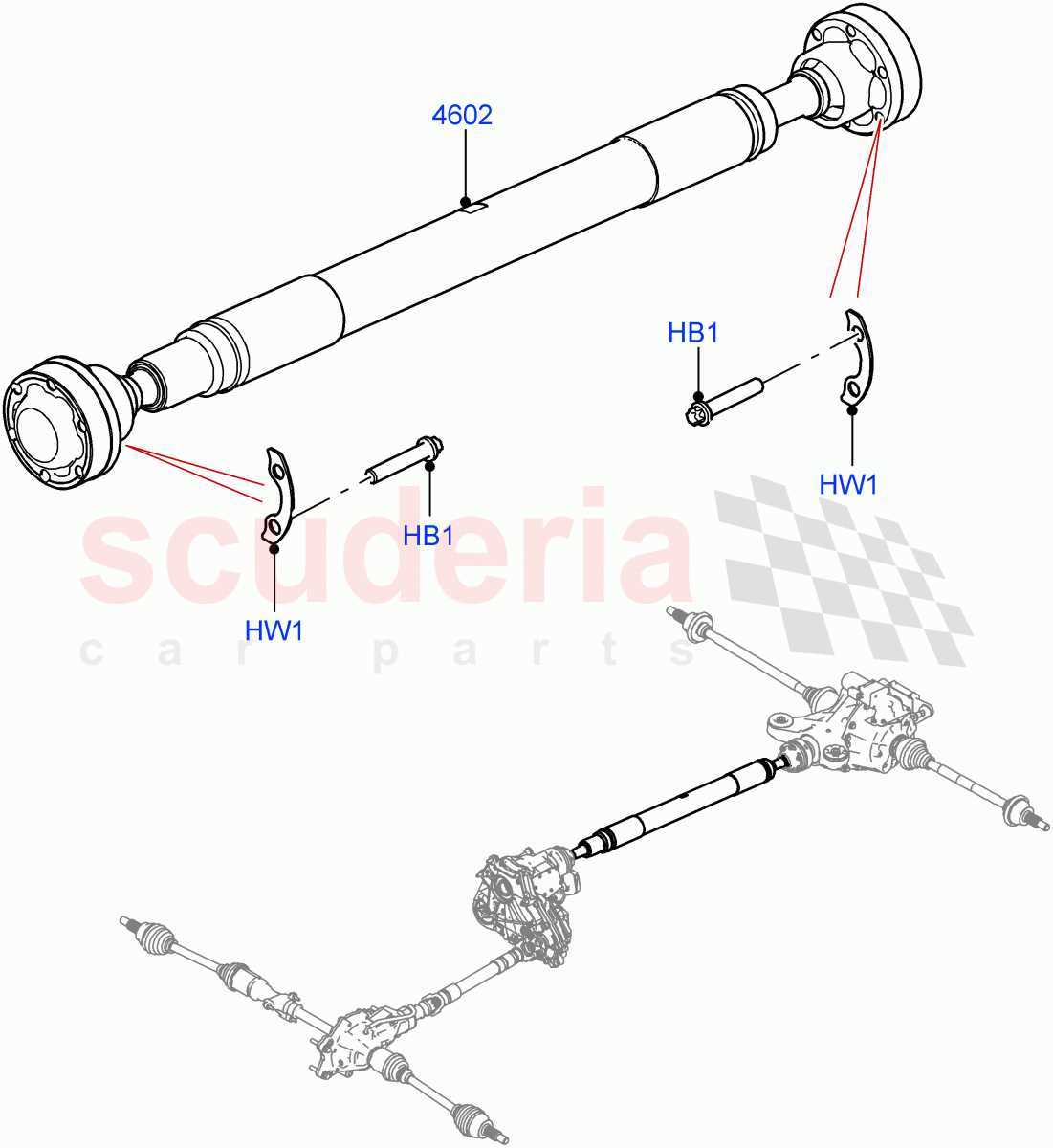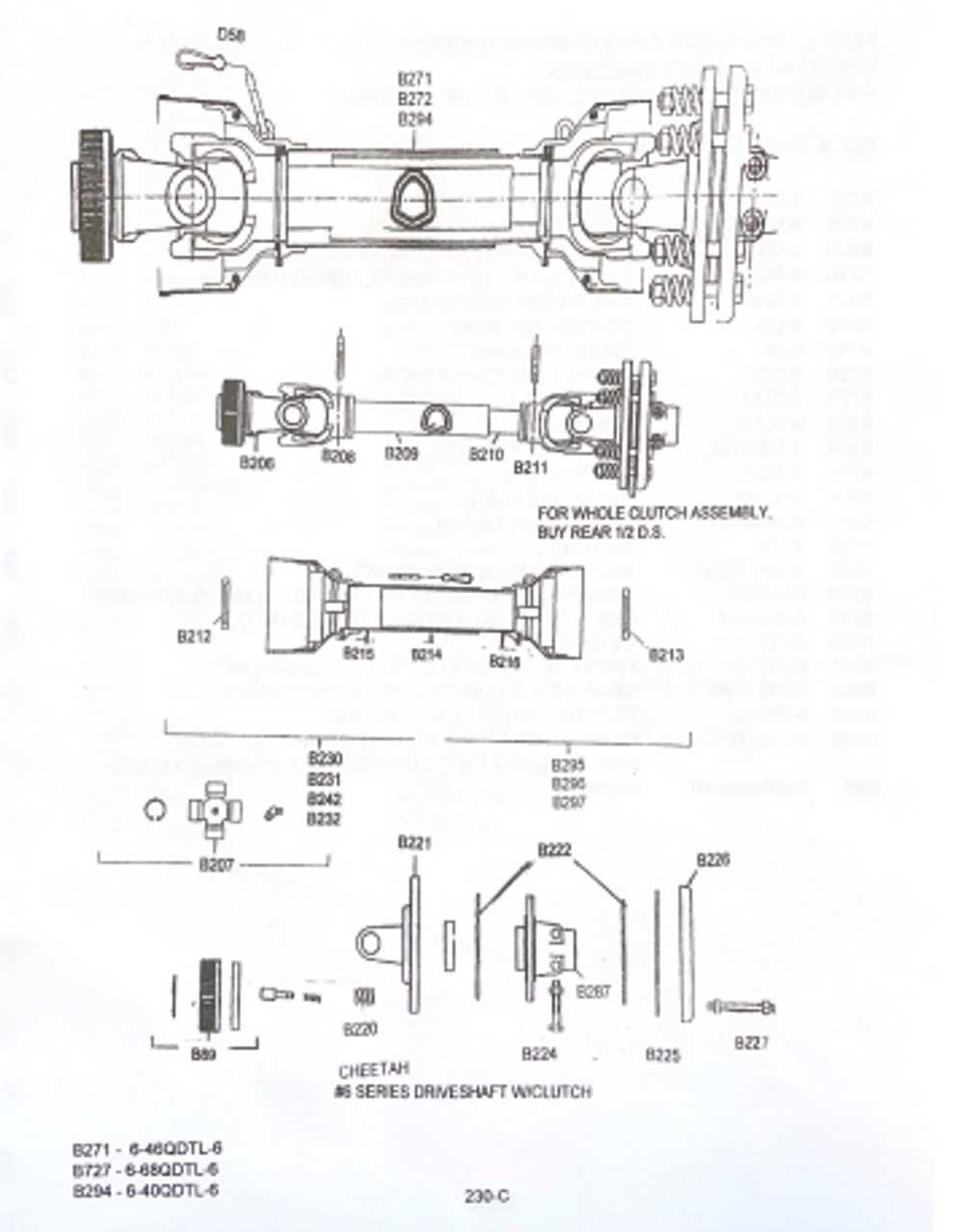
In any vehicle, the powertrain plays a crucial role in transmitting engine power to the wheels, ensuring smooth and efficient movement. Within this system, several key elements work together to facilitate rotation and drive the vehicle forward. Understanding how these components interact can help identify potential issues and assist in maintenance and repairs.
One of the most important aspects of this system is the connection between different mechanical elements that transfer rotational force. Each part, no matter how small, contributes to the overall functionality of the system, which is why it’s essential to understand how they work and where they fit within the larger structure.
In this section, we will break down the essential components involved in the power transfer mechanism, offering a visual guide to help you identify the various parts and their functions. This knowledge is not only valuable for troubleshooting but also for maintaining optimal performance over time. Whether you’re a mechanic or a car enthusiast, gaining insight into these mechanical systems is essential for ensuring your vehicle runs smoothly.
Understanding the Driveshaft Components
The mechanism responsible for transferring rotational power from the engine to the wheels is made up of several interconnecting elements. Each of these components has a specific role in ensuring smooth and efficient operation. Without understanding the function of each piece, diagnosing issues or performing maintenance can be challenging. This section will explore these essential components and their roles in the overall system.
Key Elements in Power Transfer
The power transfer system consists of several parts that work together to transmit torque from the engine to the wheels. Below are some of the primary components involved:
- Universal joints: These joints allow for flexibility and movement between different sections of the system, ensuring that torque is transferred smoothly even when parts are not perfectly aligned.
- Slip yoke: Positioned at the end of the shaft, the slip yoke allows for adjustments in length as the system moves, preventing stress on the components.
- Support bearings: These bearings help keep the assembly aligned and reduce friction, ensuring efficient power transfer.
- Flanges: These are the connecting points that secure different sections of the system together, ensuring a stable link between moving parts.
The Role of Flexibility and Strength
Each part must balance flexibility and strength to cope with varying forces and movements. The components are designed to withstand vibrations, temperature fluctuations, and mechanical stress while maintaining alignment and power transmission.
- Durability: The components must be tough enough to handle high torque and stress during operation.
- Flexibility: At the same time, they must allow for slight movements and adjustments to prevent strain on the system.
Understanding how these components interact is essential for maintaining optimal performance and avoiding breakdowns. Proper care and regular checks can ensure that the system functions effectively and efficiently throughout its lifespan.
How to Read a Driveshaft Parts Diagram
Understanding mechanical schematics is a vital skill for anyone working with vehicle systems. These visual representations show how different elements within the power transmission mechanism fit and function together. Knowing how to read these illustrations can help you identify each part’s role and its position within the overall assembly.
Identifying Key Components
When looking at a schematic, each component is typically labeled with a number or name for easy identification. The first step is to familiarize yourself with the layout and symbols used in the diagram. Some key components to look for include:
- Couplings: These connectors link different sections of the system, allowing power to flow smoothly between them.
- Universal joints: These elements enable rotation and flexibility, allowing for movement without disrupting power transfer.
- Bearings: Bearings support rotating shafts, reducing friction and wear over time.
- Flanges: These connectors help join parts together securely to maintain stability within the system.
Interpreting the Layout
Once you’ve identified the parts, the next step is to understand their relative positions and how they connect. The schematic will often show these parts in their correct sequence, with lines or arrows indicating how the power flows through the system. Pay attention to:
- Arrows: Arrows show the direction of rotation or movement within the system.
- Connections: Lines connecting components indicate how they are physically linked, either through bolts, couplings, or other fastening methods.
- Scale and proportions: Some diagrams provide a scale to show the relative sizes of components.
By mastering the art of reading these diagrams, you can more easily diagnose problems, perform repairs, and understand the inner workings of complex mechanical systems.
Common Issues with Driveshaft Parts
Mechanical systems responsible for transmitting power from the engine to the wheels can experience a variety of issues over time. Understanding the most common problems can help in diagnosing and addressing potential failures before they cause significant damage. In this section, we’ll explore some of the typical complications that arise with these essential components.
Wear and Tear on Rotating Components

Over time, the moving parts of the system endure constant stress and friction, which can lead to significant wear. This can affect performance and even cause complete failure if not addressed promptly. Common issues include:
- Worn-out universal joints: These joints allow rotation and flexibility but can wear out due to prolonged use, causing vibration or noise during operation.
- Damaged bearings: Bearings that support rotating shafts can become damaged due to overheating, excessive load, or lack of lubrication, leading to increased friction and eventually failure.
- Cracked or bent shafts: If a shaft becomes bent or cracked, it can affect the alignment, causing imbalance and damaging other connected components.
Misalignment and Imbalance
Proper alignment is crucial for ensuring smooth operation and preventing undue stress on the system. Misalignment often occurs when parts shift due to wear or incorrect installation. Symptoms of this issue include:
- Vibrations: If the components are misaligned, you may feel vibrations during driving, which can worsen over time and lead to further damage.
- Excessive noise: A misaligned or unbalanced system may produce squealing, grinding, or clunking noises, indicating that parts are not moving smoothly.
Regular inspection and maintenance can prevent these common issues, ensuring the longevity and performance of the power transmission system.